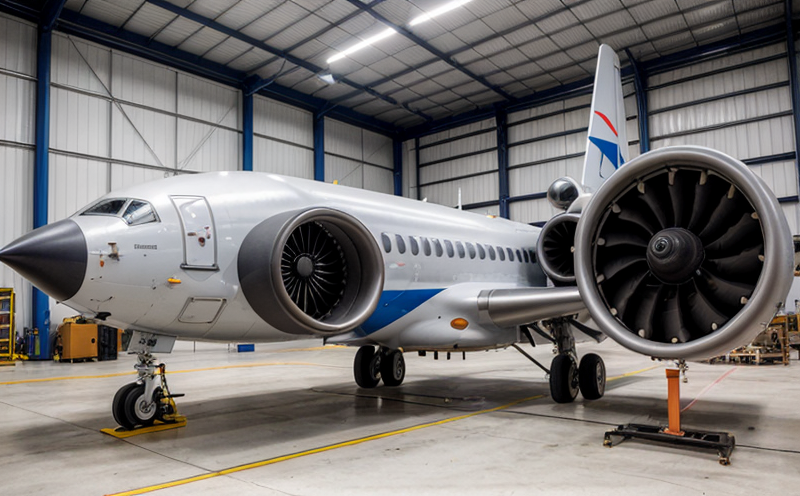Vibration Endurance Testing of Defense Electronics
Defense electronics are subjected to a wide range of environmental and operational stresses during their lifecycle. Vibration endurance testing plays a crucial role in ensuring the reliability, robustness, and safety of these devices under realistic conditions.
In aerospace and defense applications, electronic components must withstand extreme vibrations that can occur due to launch, flight, or ground operations. This type of testing is essential for verifying that electronics will function correctly throughout their intended lifecycle without failure. The test simulates the vibration environments encountered by military aircraft, ships, missiles, and other systems.
The process involves subjecting a defense electronic device to controlled vibratory forces over specified time periods or cycles. These forces are often derived from environmental data collected during field operations or from known standards such as MIL-STD-810F/G/H and ISO 2631:1997.
The goal is to determine the device's ability to operate correctly despite exposure to vibration levels that could potentially cause damage. This includes checking for mechanical integrity, electrical performance, functionality, and overall durability.
Proper preparation of specimens prior to testing ensures accurate results. Components must be securely mounted within a test fixture designed specifically for their shape and size. Fixtures can vary widely depending on the geometry and weight distribution of the component being tested.
The fixtures themselves play an important role in reproducing real-world conditions accurately during tests. They need to simulate how the device would typically behave when installed or used within its intended environment, whether it's in a missile casing, aircraft structure, or ground vehicle chassis.
Once prepared, specimens are placed into a vibration testing machine capable of generating precise frequencies and amplitudes according to specified parameters. Modern equipment often includes software that allows for real-time monitoring and adjustment during runs.
After completing the test sequence, analysts assess various aspects including surface finish changes, internal component movement, circuit board integrity, connectors reliability, and overall performance metrics such as signal strength or power consumption levels.
Scope and Methodology
| Parameter | Description |
|---|---|
| Vibration Frequency Range | Typically between 10 Hz and 2 kHz, but can vary based on specific requirements. |
| Vibration Amplitude Levels | Defined by the standard being followed (e.g., MIL-STD-810F). |
| Test Duration | Ranges from several hours to multiple days depending on the application. |
The testing procedure involves subjecting the electronic device under test (EUT) to a series of vibration cycles that simulate real-world operational conditions. The frequency and amplitude levels are carefully selected based on engineering inputs from the client or regulatory requirements like MIL-STD-810F.
During each cycle, the EUT is subjected to controlled vibrations within the specified range. If any issues arise during testing—such as delamination of materials, loosening of fasteners, or performance degradation—the test can be paused and analyzed further if necessary before resuming with adjustments made where needed.
After completing all cycles, the EUT is inspected for signs of failure or damage. Any discrepancies are documented along with recommendations for improvement based on findings from this phase.
Competitive Advantage and Market Impact
Vibration endurance testing offers significant advantages in terms of product development, quality assurance, and compliance with international standards. By identifying potential weaknesses early in the design process through thorough vibration testing, manufacturers can improve their products' reliability and reduce costly repairs or recalls later on.
From a market perspective, meeting stringent vibration criteria helps companies gain competitive edge by demonstrating superior product quality to potential customers who prioritize durability and performance above all else. Compliance with relevant standards also opens up access to government contracts where adherence to certain specifications is mandatory.
Use Cases and Application Examples
| Application Area | Description |
|---|---|
| Aircraft Avionics | Ensuring proper operation of avionics systems during flight. |
| Missile Guidance Systems | Evaluating the robustness of guidance components against severe vibrations. |
| Unmanned Aerial Vehicles (UAVs) | Demonstrating durability in harsh environments typical for UAV operations. |
In aircraft avionics, vibration testing ensures that all onboard systems function correctly even when subjected to significant vibrations during takeoff and landing. For missile guidance systems, it's critical to verify that critical components remain intact despite exposure to intense mechanical stresses.
Unmanned aerial vehicles face unique challenges due to their lightweight designs and frequent deployment in challenging terrains. Conducting vibration endurance tests helps manufacturers ensure UAVs can withstand the rigors of service while maintaining optimal performance.





